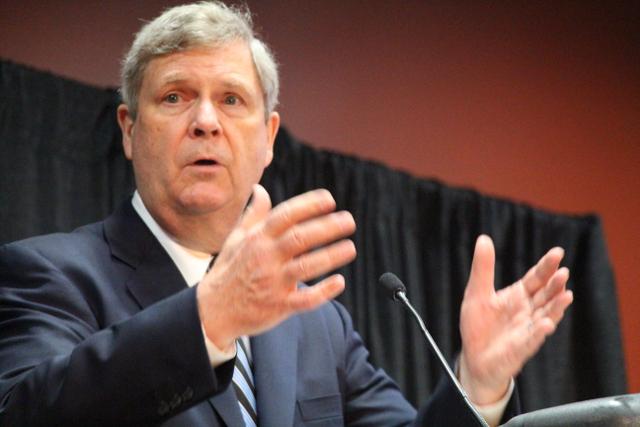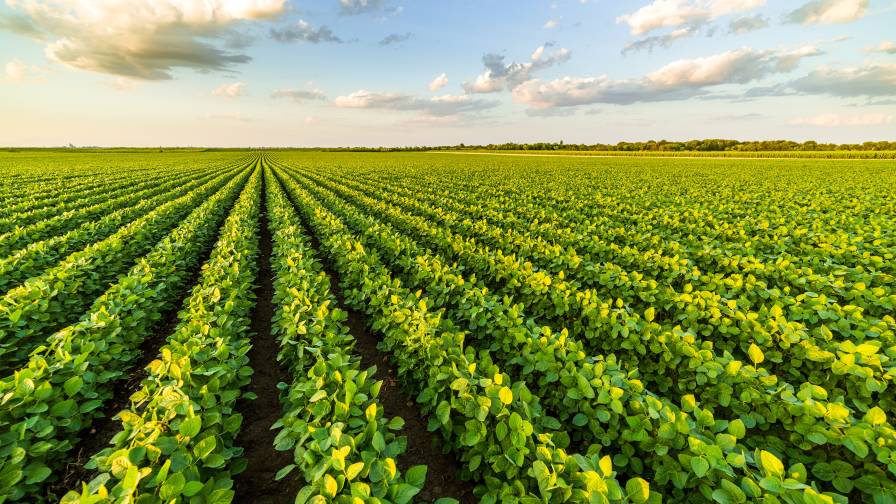Welcome Back, Mr. Ag Secretary
There are precious few things that can stop or delay determined farmers. COVID-19 certainly challenged the ag industry, but last month those intrepid growers adapted their plans and held the 25th anniversary edition of Commodity Classic.
The event had been slated to return to San Antonio, TX, where the 2020 version was held. The 2021 edition featured the return of Tom Vilsack, who reprises his role as Secretary of Agriculture, a position he held under President Barack Obama. When he spoke at Commodity Classic in early March, he’d been in the role for barely a week. And while he says there’s much to learn in his return to USDA after spending his intervening years as President and CEO of the U.S. Dairy Export Council, Vilsack already knows where he wants the organization to get started.

Tom Vilsack returns to the role of U.S. Secretary of Agriculture, which he also held in the administration of Barack Obama.
While preparing for his talk, Vilsack found a chart that highlighted the plight of the American farm.
“This chart basically showed that 89.6% of American farm families currently do not make the majority of the money that they earn from their farming operation,” Vilsack says. “Saying this another way, nearly 90% of American farmers require off-farm income.”
Sometimes that’s a second job or includes income from a spouse or child.
“That is a very difficult statistic for a secretary of agriculture to repeat to a group of producers,” Vilsack continued. “It suggests we need to do a lot better job. We need to do a lot more work to create a situation and an industry where more people can make the majority of what they make from what they want to do, what they love to do.”
With that notion in mind, Vilsack said USDA’s focus for the next four years, is going to be on markets — more markets, better markets, newer markets, and fairer markets. He went on to define what each of those markets means and how USDA plans to address the issues:
More Markets
“Twenty to 30% of what is grown and raised in this country ultimately is exported,” Vilsack says. “I learned a lot of lessons in the last four years working for the dairy industry that we need to continue to focus on providing greater presence for U.S. products in markets.”
It’s not just opening and developing new avenues for U.S. products.
“More markets involves the enforcement of trade agreements that have already been entered into and enforced in a way in which those trade agreements were negotiated,” Vilsack says.
Despite his brief time in the role, Vilsack has already spoken with lead ag officials in both Canada and Mexico regarding USMCA. The U.S. is looking for Canada to be more accepting of various varieties of wheat and in Mexico the issue is that country’s reluctance to adopt genetically engineered crops.
“More markets also means looking at new trade agreements,” Vilsack says. “I’m pleased that we’ve taken the step in the Biden/Harris administration to send a signal to the U.K. and the EU of an opportunity for us to negotiate with the relaxation of the tariffs in place because of the Airbus/Boeing dispute.”
Vilsack suggested that conversation signals a willingness the U.S. is open to discussions about trade agreements in the U.K. and the EU. “Maybe it gives us an opportunity to open the door with the understanding that any trade agreement must include open access to agricultural products in order for it to be successful,” he says.
Vilsack did not forget to reflect on the one trade agreement that dominated much of the last administration — China and Phase One.
“I’m confident as a long as the relationship is focused on trade,” Vilsack said when asked about whether China would meet its commitments. “China needs what the U.S. can provide. And China needs a lot of what we can provide.
“The reality is our China relationship is complex,” Vilsack continued. “It has multiple layers, some of which we compete with China on the world scene. Some of those layers, we are cooperating with China on some major issues, like climate change and cyber terrorism. It’s a complicated relationship, and on any given day, a complexity in some other aspect of the relationship, may have a negative impact on our trade relationship.”
Better Markets
By better markets are more open and transparent markets.
“It’s fair to say there’s a lot of concern about consolidation in agriculture in a variety of areas,” Vilsack says. “We’re going to do what we can at USDA to make sure that we have adequate price discovery, that we strengthen rules for more a more competitive environment, make sure that farmers are treated fairly in the market, and to the extent that there are issues relative to unfair activities that we’re going to be a department that supports farmers, works for farmers, and enforces fair trade and fair trade opportunities. We’re going to highlight where competitive markets are working well within the U.S. and make sure people understand what a competitive market looks like.”
New Markets
USDA will focus on climate and the ability to create new opportunities for farmers to profit by sequestering carbon, Vilsack said.
“Farmers profit by embracing practices that we know are climate smart, that we know produce regenerative results, that we know that will improve the soil health. We need to be investing in and supporting and providing incentives and encouragement for farmers to continue to embrace practices that they’re already embracing from cover crops to crop diversity to rotational grazing, and other practices that we know will have a positive impact on soil health and water quality.
“By investing in those practices, we’re also going to be right by the environment,” Vilsack continued. “By creating opportunities, perhaps through a carbon bank of sorts that would be focused and designed specifically to benefit farmers. Today, in America we have about 138 million carbon credits that are currently outstanding in various markets. The reality is only about 2.5 million of those credits are focused on agriculture. It’s because those systems aren’t designed to benefit farmers.”
If agriculture is going to be serious about carbon sequestration by incentivizing and providing new revenue streams for growers, USDA must create, design, and implement programs in a way that benefits farmers, not necessarily the investor class, but farmers,” Vilsack says. “It’s the farmers who are going to be sequestering the carbon. It’s the farmers who are going to provide some of the early winds in an effort on climate.”
Vilsack knows he has a lot of work to do in the next four years. And if it can be completed, the U.S. ag economy and those who comprise, it will be better for it at the end of the Biden administration.
“If we focus our attention on these strategies, of more markets, better markets, newer markets, fairer markets, what we will see over time is a better economic opportunity for our farm families in this country.”
Vilsack finished his remarks by recognizing the significant role growers play in the economy.
“I know how important you all are,” Vilsack says. I know the value system you represent; I know the important work you do in your communities. I know how deeply you care about your land and the ability and opportunity to transfer that opportunity to the next generation. I commit to you that I’ll do everything I possibly can with all the energy I have to be a Secretary of Agriculture that helps to create more opportunities.”






